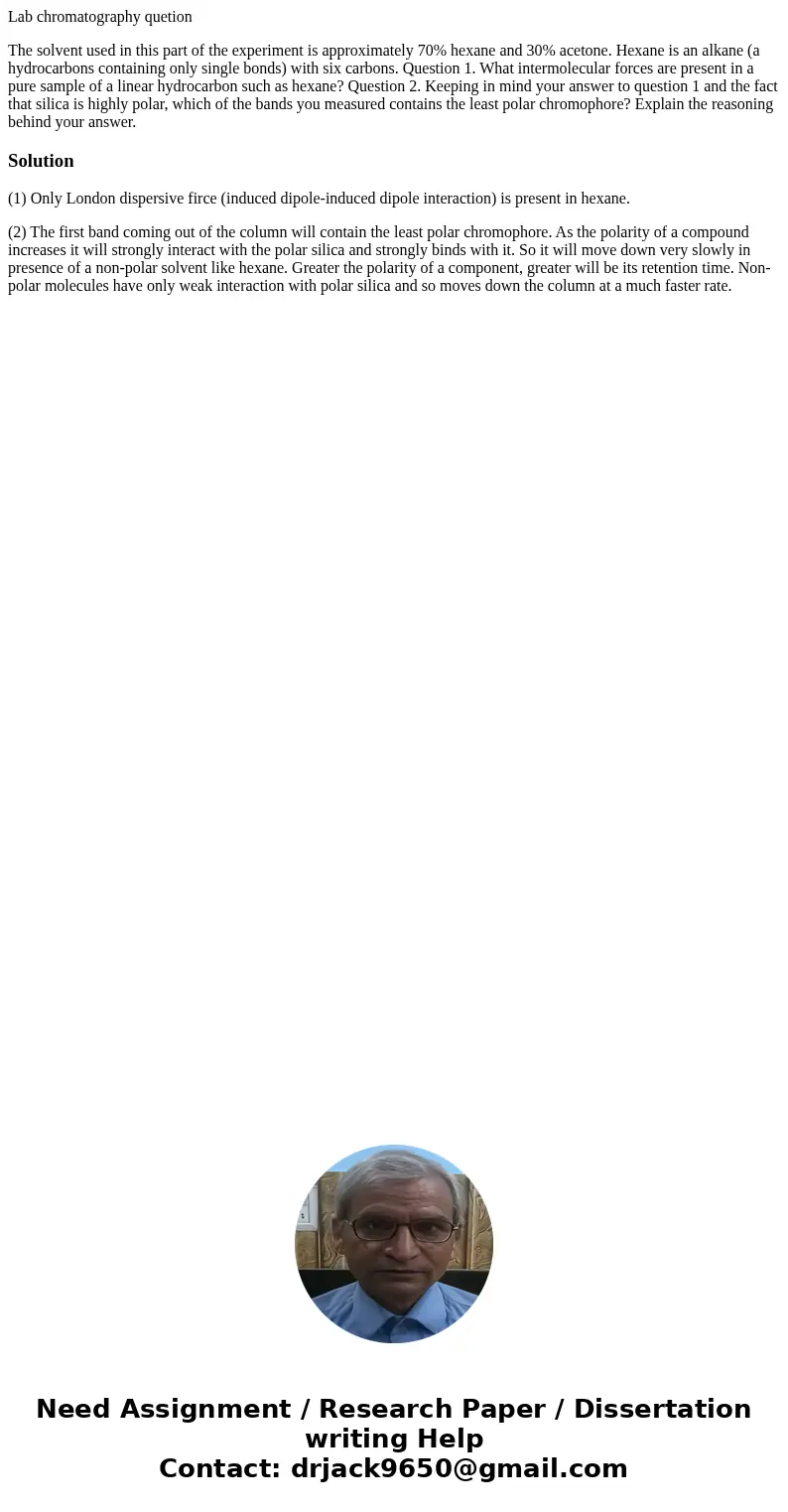Lab chromatography quetion The solvent used in this part of
Lab chromatography quetion
The solvent used in this part of the experiment is approximately 70% hexane and 30% acetone. Hexane is an alkane (a hydrocarbons containing only single bonds) with six carbons. Question 1. What intermolecular forces are present in a pure sample of a linear hydrocarbon such as hexane? Question 2. Keeping in mind your answer to question 1 and the fact that silica is highly polar, which of the bands you measured contains the least polar chromophore? Explain the reasoning behind your answer.
Solution
(1) Only London dispersive firce (induced dipole-induced dipole interaction) is present in hexane.
(2) The first band coming out of the column will contain the least polar chromophore. As the polarity of a compound increases it will strongly interact with the polar silica and strongly binds with it. So it will move down very slowly in presence of a non-polar solvent like hexane. Greater the polarity of a component, greater will be its retention time. Non-polar molecules have only weak interaction with polar silica and so moves down the column at a much faster rate.

 Homework Sourse
Homework Sourse